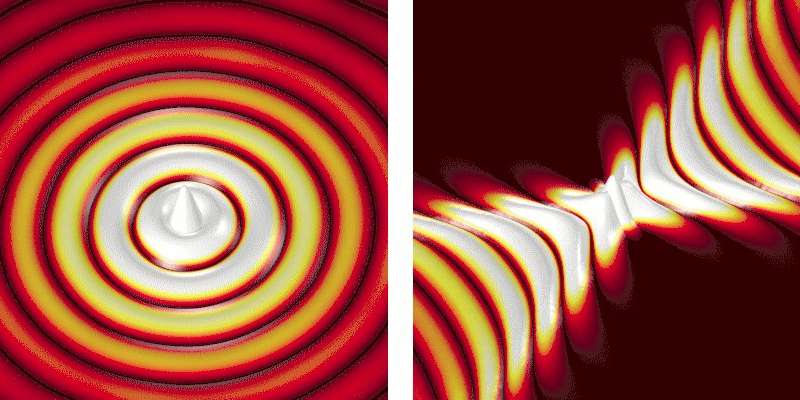Researchers just developed a metasurface that turns wavefronts of light upside down.
Typically, optical waves exhibit circular wavefronts when they propagate away from a source point. In general, they act in the same manner as when ripples are formed when you drop an object into water.
However, there are specific structures, referred to as metasurfaces, that could turn light upside down as it propagates along them.
Scientists call these unusual wavefronts hyperbolic surface polaritons.
In a study published in the journal Science, the CIC nanoGUNE researchers from Spain said that their scientific achievement could have practical application in studies aimed at controlling and monitoring lights.
Researchers from the CIC nanoGUNE in San Sebastian, Spain have reportedly created a metasurface that could turn light upside down as it propagates along it. @nanoGUNEClick To Tweet“Metasurfaces with strongly anisotropic optical properties can support deep subwavelength-scale confined electromagnetic waves (polaritons), which promise opportunities for controlling light in photonic and optoelectronic applications,” the researchers wrote in their paper.
The metasurface created by the Spanish researchers is based on 2D boron nitride (BN). They firmly believe that this new type of surface could be used to develop miniature chemical sensors or may be applied in managing heat for nanoscale optoelectronic devices.
Read more: New Study Suggests that it’s Possible to Stop Light Waves in Their Tracks
Hyperbolic Metasurface

For years, scientists had theoretically predicted that a metasurface could turn light upside down when it propagates along it.
“On such surfaces, called hyperbolic metasurfaces, the waves emitted from a point source propagate only in certain directions, and with open (concave) wavefronts,” Javier Alfaro, a Ph.D. student at nanoGune and co-author of the paper, was quoted as saying.
According to Alfaro, the hyperbolic surface polaritons have wavelengths that are much “smaller than that of light in free space or standard waveguides,” and they only propagate in specific directions.
However, creating a metasurface where the surface polaritons could propagate is no easy feat as it requires extremely precise structuring on the nanometer scale.
To accomplish this, Alfaro and his colleagues used a graphene-like 2D material called boron nitride. Apparently, boron nitride can manipulate infrared light on a microscopic scale.
“We developed a mid-infrared hyperbolic metasurface by nanostructuring a thin layer of hexagonal boron nitride that supports deep subwavelength-scale phonon polaritons that propagate with in-plane hyperbolic dispersion,” Alfaro explained in their study.
The researchers also reportedly used electron beam lithography and etching of thin flakes of high-quality boron nitride from Kansas State University to create the metasurface.
“After several optimization steps, we achieved the required precision and obtained grating structures with gap sizes as small as 25 nm,” Irene Dolado, another Ph.D. student at nanoGUNE, explained.
“The same fabrication methods can also be applied to other materials, which could pave the way to realize artificial metasurface structures with custom-made optical properties,” Saül Vélez, a former postdoctoral researcher at nanoGUNE, added.
After fabricating the metasurface, the researchers used a “state-of-the-art infrared nanoimaging technique” to see how the light waves would propagate along the material.
They placed an infrared gold nanorod on the metasurface. The nanorod acted like a stone dropped into water and concentrated incident infrared light into a tiny spot.
This, in turn, launched the waves that propagate along the metasurface. Using a scattering-type scanning near-field microscope or s-SNOM, the researchers then imaged the wavefronts.
“It was amazing to see the images. They indeed showed the concave curvature of the wavefronts that were propagating away from the gold nanorod, exactly as predicted by theory,” Rainer Hillenbrand, lead researcher of the study, said.
The study suggests that in the future, nanostructured 2D materials could become unique platforms for hyperbolic metasurface devices and circuits.
Furthermore, it demonstrates how near-field microscopy could be used to reveal rare optical phenomena in “anisotropic materials and for verifying new metasurface design principles.”





Comments (0)
Least Recent